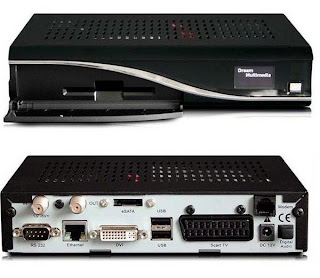The Dream box is a series of Linux-powered DVB satellite, terrestrial and cable digital television receivers (set-top box), produced by German multimedia vendor Dream Multimedia.
The Linux-based software used by Dream box was originally developed for DBox2, by the Tuxbox project. The Dbox2 was a proprietary design distributed by KirchMedia for their pay TV services. The bankruptcy of KirchMedia flooded the market with unsold boxes available for Linux enthusiasts. The Dreambox shares the basic design of the DBox2, including the Ethernet port and the PowerPC processor.
Its firmware is officially user-upgradable, since it is a Linux-based computer, as opposed to third-party "patching" of alternate receivers. All units support Dream's own Dream Crypt conditional access (CA) system, with software-emulated CA Modules (CAMs) available for many alternate CA systems. The built-in Ethernet interface allows networked computers to access the recordings on the internal hard disks on some Dreambox models. It also enables the receiver to store digital copies of DVB MPEG transport streams on networked file systems or broadcast the streams as IPTV to Video LAN and XBMC Media Center clients. Unlike many PC based PVR systems that use free-to-air type of DVB receiver cards, the built-in conditional access allows receiving and storing encrypted content.
In 2007, Dream Multimedia also introduced a non-Linux based Dreambox receiver, the DM100, their sole to date, running on unspecified hardware, but still featuring an Ethernet port and a USB port. The speed of the USB port is not specified, the manufacturer only says it is of B type, the one found on peripherals connected to PCs.
The factory-installed distribution on the Dreambox is mostly available under the GNU General Public License (GPL) and uses standard Linux API's, including Linux DVB API and Linux Infrared Remote Control (LIRC). Several models (7025, 800 and 8000) use GStreamer as a multimedia framework. This configuration encourages enthusiasts to modify its functions, particularly in the form of so-called images.

No comments:
Post a Comment